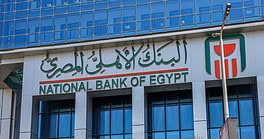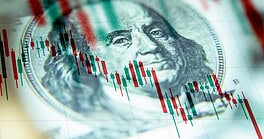After a decade of tumultuous upheavals in the 1990s, the currency markets in the 21st century have been remarkably calm. They might not stay that way for long.
If there is a single decade when currencies and foreign exchange were consistently at the forefront of the news, it was the 1990s, which will probably be remembered for the almost decade-long series of currency crises that swept through Europe and emerging markets in Asia and Latin America. The sheer scale of the crises in the 1990s makes it even more remarkable that the past seven years have been so tranquil.
In 1992 Europes Exchange Rate Mechanism (ERM) suffered a wave of speculative attacks that caused Finland, Italy, Norway, Sweden and the United Kingdom to float their currencies, leaving the ERM unsalvageable. In 1994 Latin America was plunged into turmoil by a currency crisis that was triggered by the sudden devaluation of the Mexican peso. The peso crisis spilled over into other Latin American markets such as Argentina.
In July 1997 speculators struck again, this time attacking the Thai baht. Massive speculation against the baht consumed a vast war chest of foreign exchange reverses, forcing the Thai government to devalue its currency. The currency slumped by more than 20%, and the ensuing economic crisis spilled over into Indonesia, Korea, Malaysia and the Philippines, signaling the end of investors love affair with Asias tiger economies and the adoption of a new catch-phrase: the Asian contagion.
In 1998 it was Russias turn, as investors piled out of the country en masse after the government tried to modestly revalue the ruble. The currency has taken almost a decade to recover its former value.
Lessons Learned
If the global currency markets are to avoid another crisis like those of the 1990s, they need to appreciate what caused the crises. Although opinions vary, the general consensus is that both the Mexican and the Asian crises were the result of formidable growth in the volume and speed of international capital movements with the persistence, in some countries, of a fixed exchange rate.
Economists maintain that a fixed exchange rate is difficult and costly to defend if there is an expectation that it will be depreciated in the future. The thinking is that if investors are sure a currency peg will eventually fail, they are more likely to launch a speculative attack sooner rather than later. Investor pessimism is often accompanied by a herd mentality, which results in investors abandoning a currency en masse. Economists believe this is why a currency crisis that starts in one country can easily spill over into neighboring countries.
The currency crises of the 1990s also highlighted the relative economic and fiscal immaturity that existed within some of these markets. As foreign capital flowed into a number of Asian economies in the 1990s, local banks became increasingly reliant on short-term foreign capital for financing domestic growth. As the currency devalued and investors fled the market, the banks could no longer rely on the foreign creditors to roll over existing short-term credit.
The lesson especially learned by countries affected by the Asian crisis was to be careful about your short-term debtnot only as far as governments were concerned but also companies, says Valentin Hofsttter, who heads RZBs foreign exchange team. A lot of these countries had short-term FX liabilities and were using fixed exchange rate regimes. Banking and regulatory supervision in these markets was also immature, and hedging of FX risk was not widespread.
Dino Kos, executive vice president of the Federal Reserve Bank of New York, notes there has been a general shift away from fixed exchange rates in a number of the countries affected by the crises in the 1990s. In a speech to the Forex Network conference in New York earlier this year, he said: Earlier regimes for these currencies all too often were overly rigid. Pressures would build, reserves would be exhausted, and massive volatility would follow.
But, almost a decade on, has enough changed in these markets to avoid a repeat of 1997? Hofsttter believes so. A number of them now maintain floating currencies instead of fixed exchange rates pegged to the dollar, which he says discourages them from stockpiling short-term debt in the first place. These countries now have huge current account surpluses so there is no need for external financing, he adds.
In other developing markets, such as those in Central & Eastern Europe, for example, governments have historically run up substantial current account deficits and are still dependent on foreign capital flows. Hofsttter says that although the CEE countries have had huge capital inflows in recent years, in countries such as Slovenia and Poland, for example, this capital is earmarked for long-term investment projects. Additionally, these countries have floating exchange rates, and Hofsttter says they are more inclined to pay attention to currency risk now than perhaps they would have been a decade ago.
The risk of another currency crisis [similar to those that occurred in the 1990s] happening is strongly diminished, says Hofsttter. If there is a crisis, it will be restricted to particular countries, which we have seen a little bit of in the last 12 months in Iceland, for example: Its currency depreciated by 30%, but the economy took it in its stride. He cites Turkey as another example of a country that has weathered depreciations of its currency but not affected its neighbors in the process.
Brian Dolan, director of research at Forex.com, which is part of Gain Capital, believes increased sophistication on the part of central banks and finance ministries will avert another currency crisis. Unlike a decade or so ago, when Asian countries had minimal FX reserves, Dolan says that trend is now reversed. Developing Asia is no longer developing, he says. They have substantial international currency reserves and increased sophistication in terms of market surveillance functions.
Commenting on recent events such as the depreciation in Iceland, for example, Dolan distinguishes between a currency crisis and a currency adjustment. That is the greatest risk out there we see at the moment, he says. Sharp adjustments of currency pairsfor example, the New Zealand and Australian dollar. As the New Zealand dollar is an illiquid currency with high yields, if there was a serious development in the economic fundamentals or an official change in stance, the potential for a sharp fall in the New Zealand dollar is very real, he says.
The Wild West Element
While countries themselves have a fundamental role to play in shoring up their currencies through better and more transparent economic management and regulatory oversight, investors also play a role. They were responsible for the contagion that spread throughout Asia and Latin America like wildfire, bringing down currency after currency, regardless of the fundamentals.
|
|
|
Dolan:Investors no longer view emerging markets as a single entity. |
The industry may have become more professionalized, but the Wild West element still remains. Dolan says the biggest risks are likely to come from the fringes of the hedge fund community, noting the impact speculation has had on the commodities markets, where in some instances prices have fallen by 25% to 30%. There is too much money chasing too few investment options and funds trying to mimic each other, he says.
Kos of the New York Federal Reserve says some in the marketplace believe that relatively little has changed. The pessimists believe that the current environment is one with huge uncertainties associated with geopolitical risks, energy prices and productivity that markets are mis-pricing, he states.
Another debate that has been raging in the currency markets for the past two years is the impact of a US economic slowdown and what that means for Asian central banks, particularly China, which holds substantial reserves denominated in US dollars. If economic conditions worsen in the United States, are countries like China, for example, likely to rebalance their portfolios away from dollars? Hofsttter believes China will continue to support the dollar and says there is only so far it can diversify its reserves portfolio. Currency reserves should match trade exposure, he says. So if 80% of Chinas trade is denominated in US dollars, they should hold currency reserves in dollars. They should take a long-term view and match trade flows to that.
Charles Dumas, an analyst at Lombard Street Research in the UK, says further depreciation of the US dollar hinges on how China handles a slowdown of the US economy. For the past several years, high domestic savings rates in countries such as China and Japan have helped support a corresponding willingness to borrow in the US, which has kept things on a relatively even keel. For the Chinese, a US slowdown is bad enough anyway, as they are dependent on their exports. A US slowdown and an increase in the yuans valuation would be a double whammy, he says. However, he says there is no reason to believe that the US dollar will substantially depreciate as long as the Chinese and Japanese continue to run huge surpluses.
Another major subplot in the currency markets, Dumas says, is the yen carry, in which speculative investors borrow yen to invest in higher-yielding currencies such as the Icelandic krona and the New Zealand and Australian dollars. There could be a potential crisis because of the enormous number of people that are paying nothing on yen, he says. If yen goes up, they are likely to liquidate their positions.
Despite all the checks and balances and the increased sophistication of countries currency management and investors behavior, a currency crisis remains a possibility. For all their sophistication, many investors will still run with the herd, and this time around it is less likely to be a stampede out of a smaller countrys currency that sets off a crisis. If the investor herd decides the dollars gentle decline is about to accelerate, then that is precisely what will happen.
Anita Hawser



